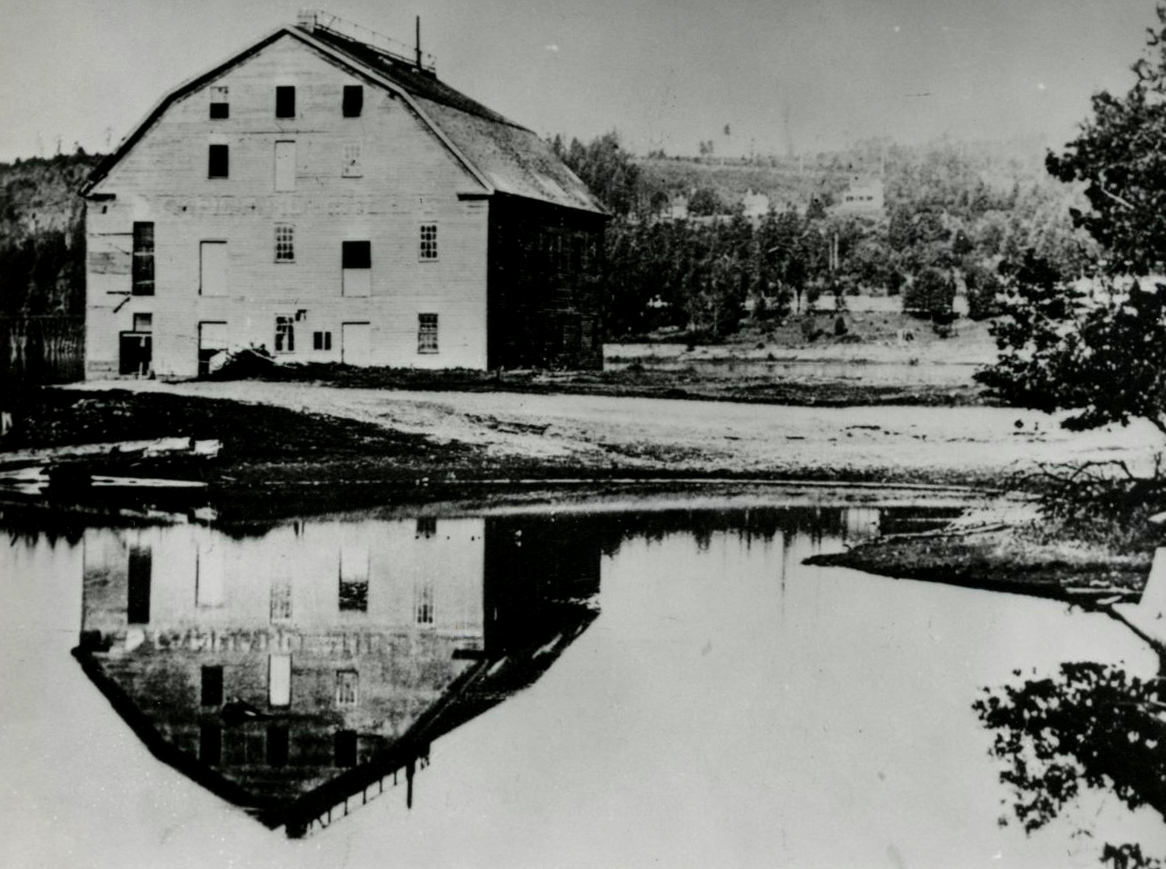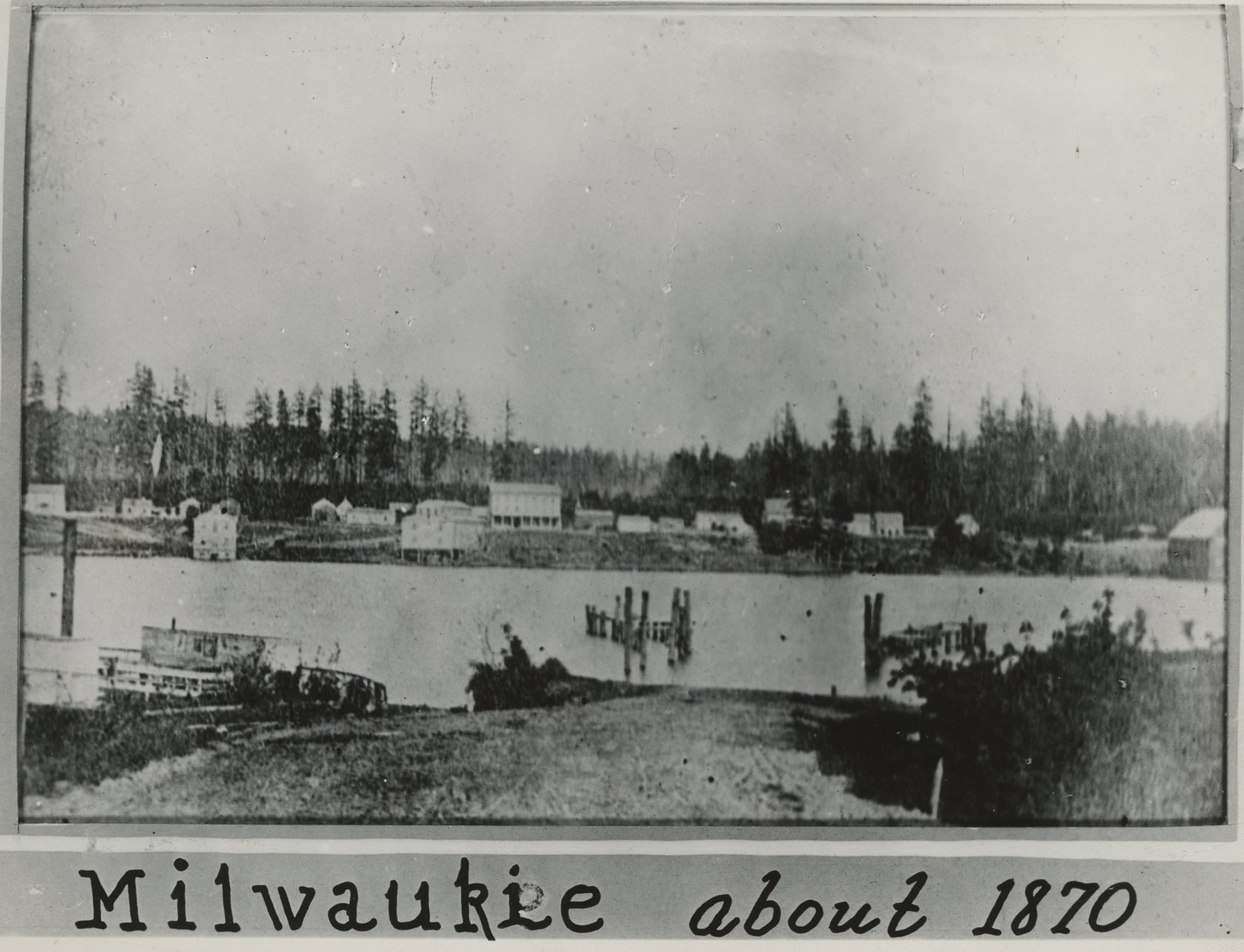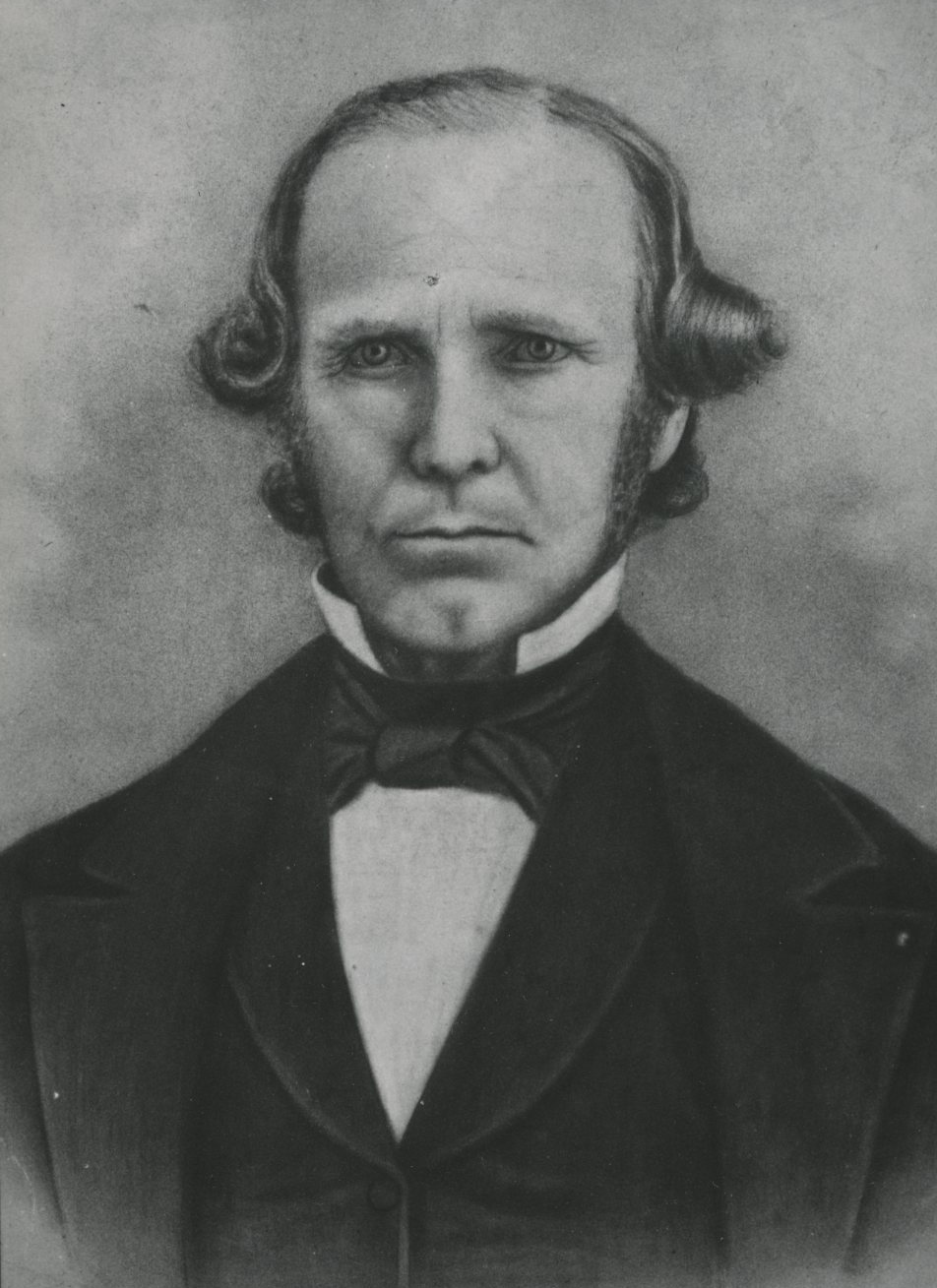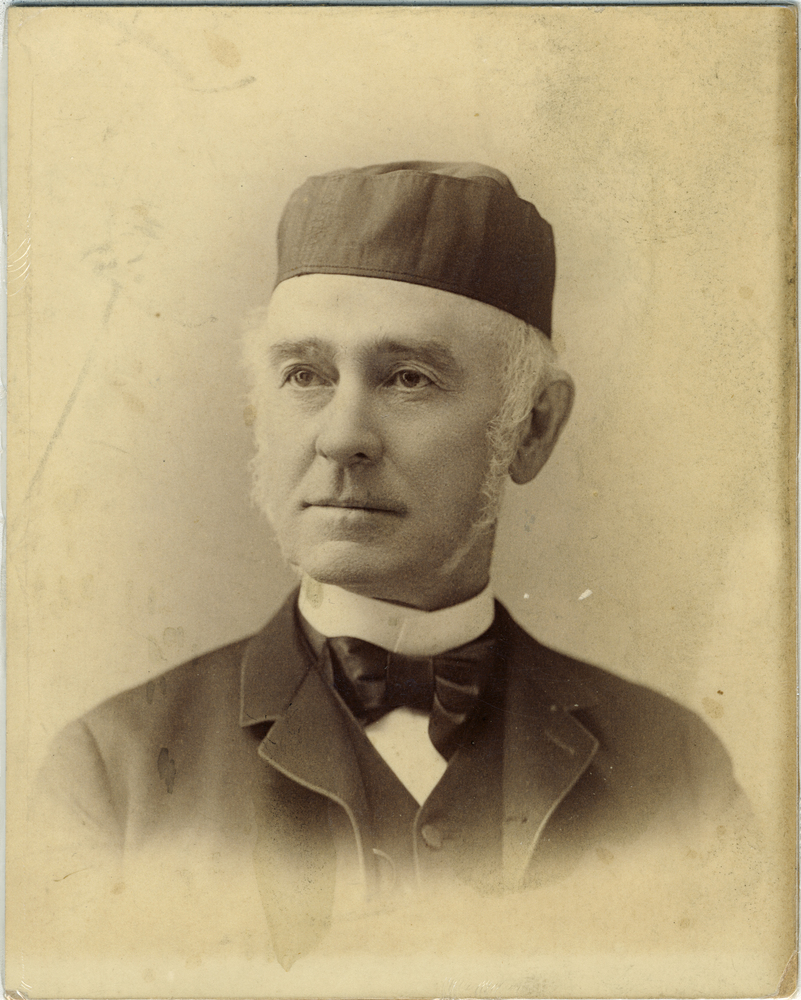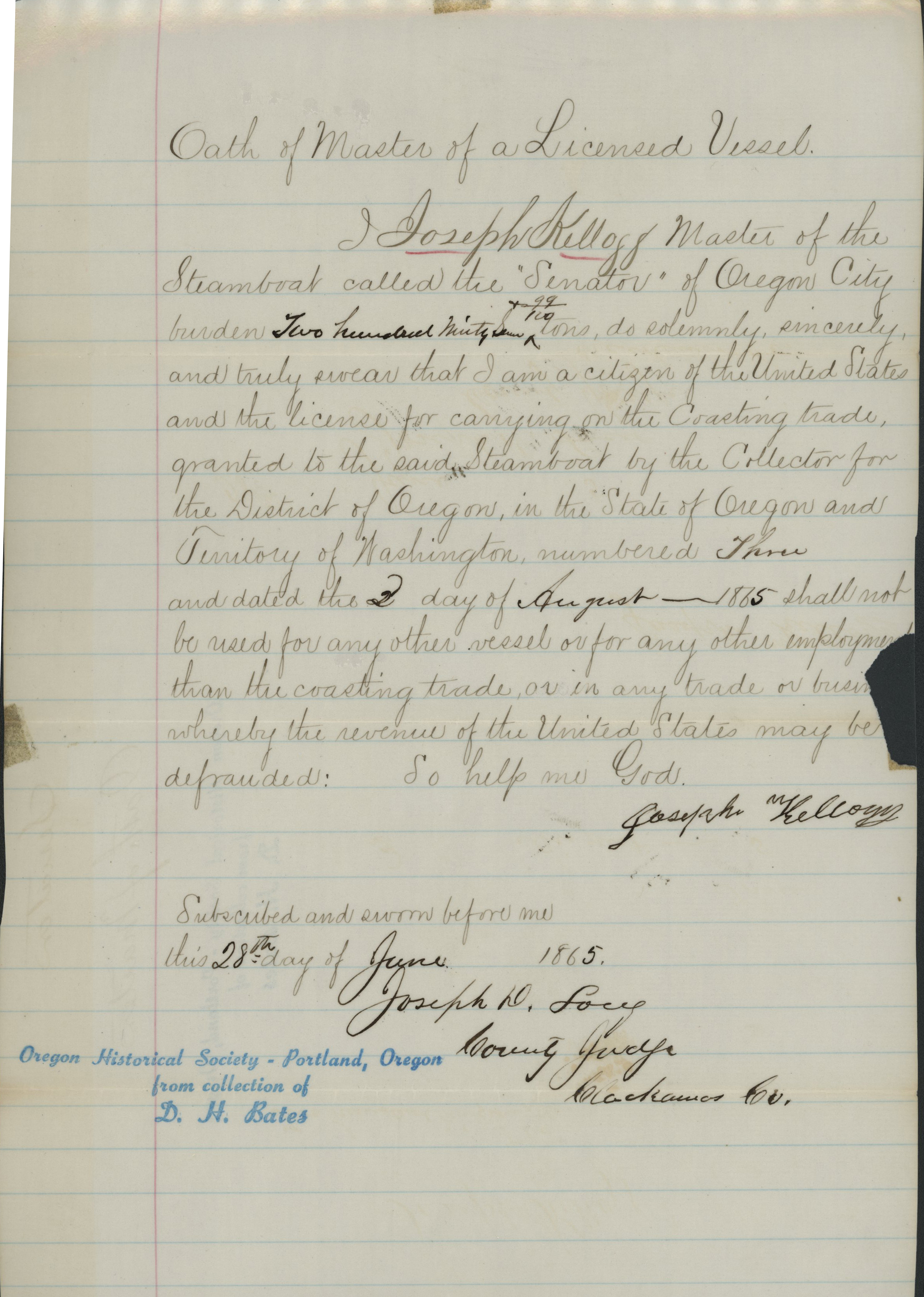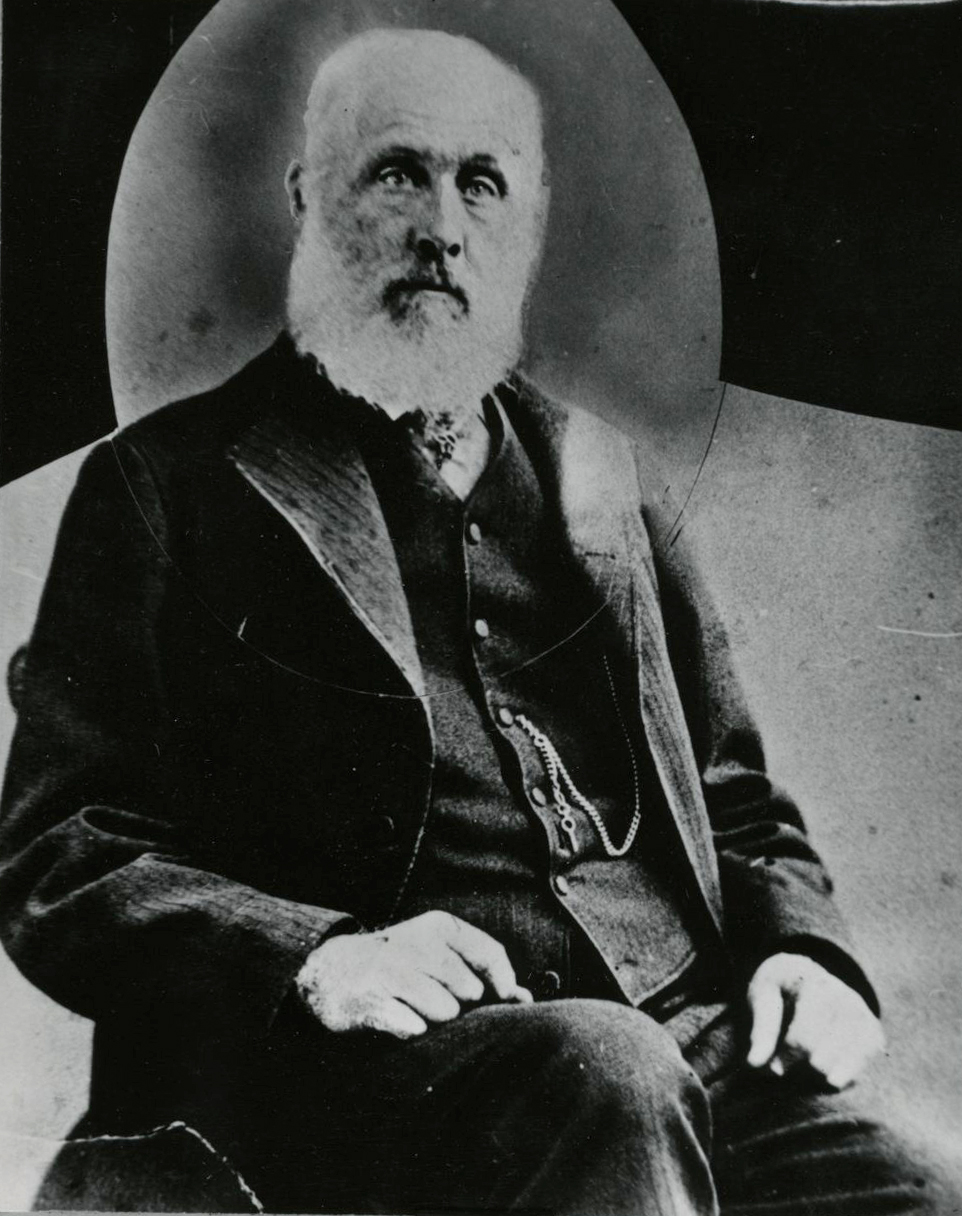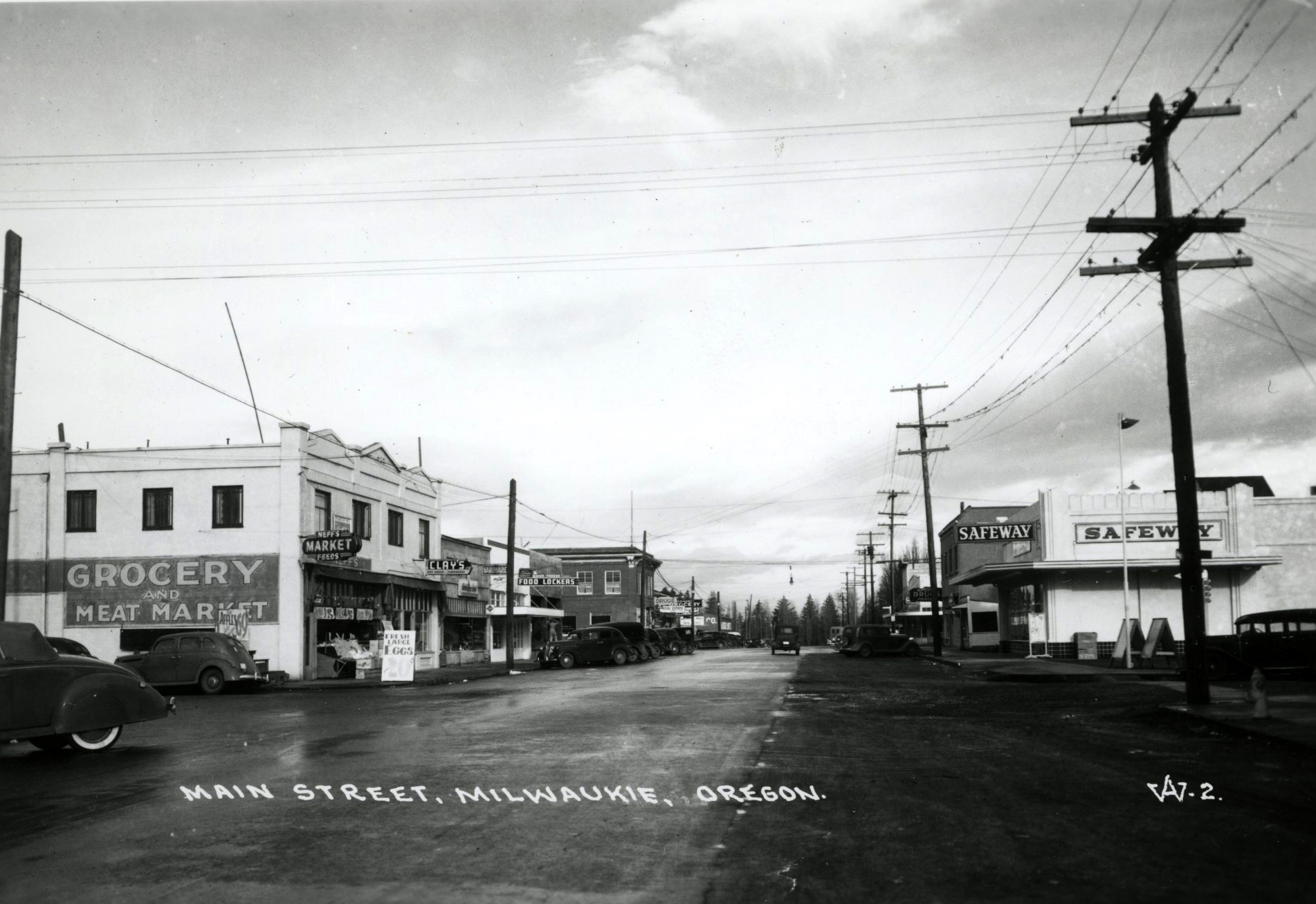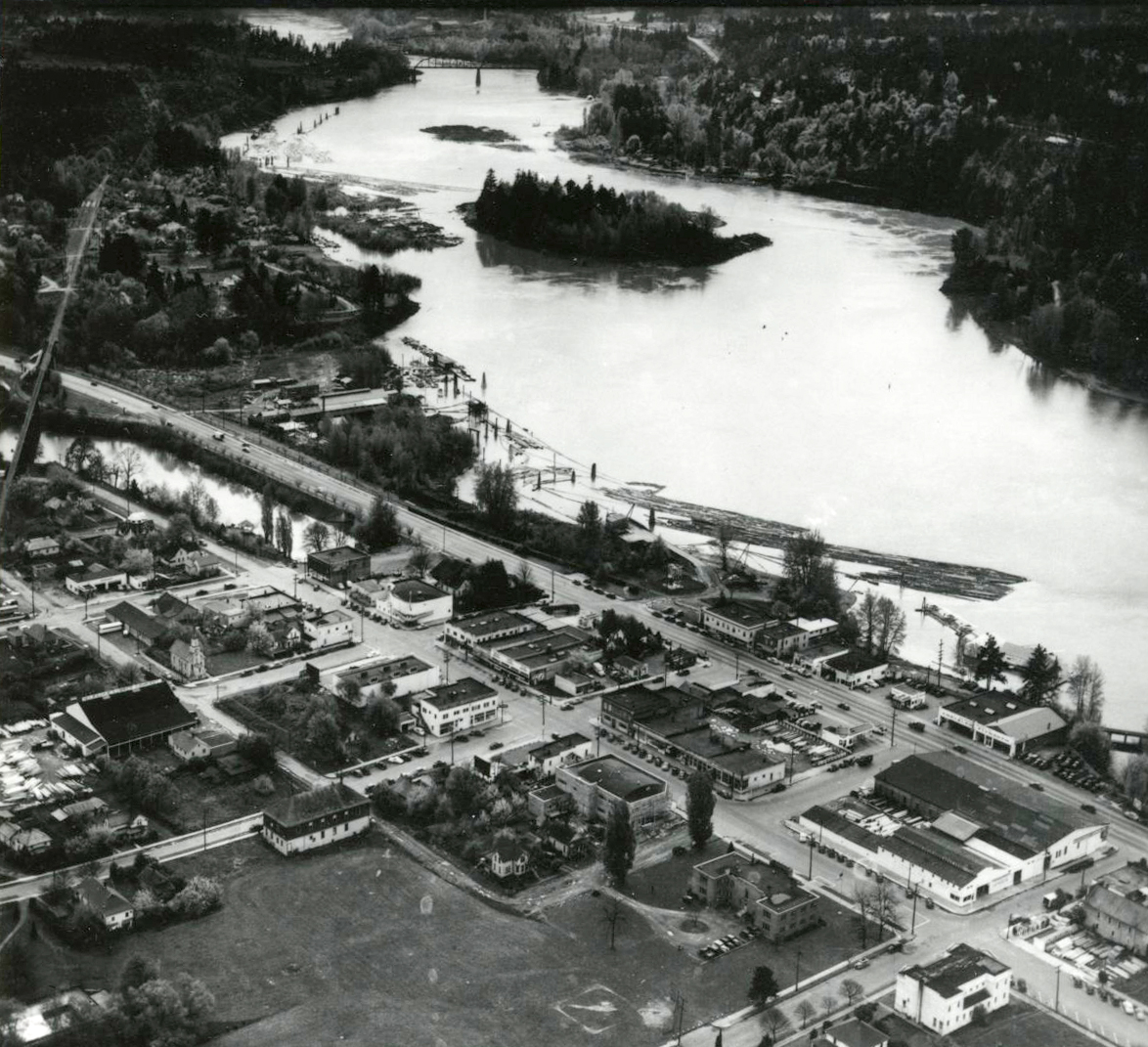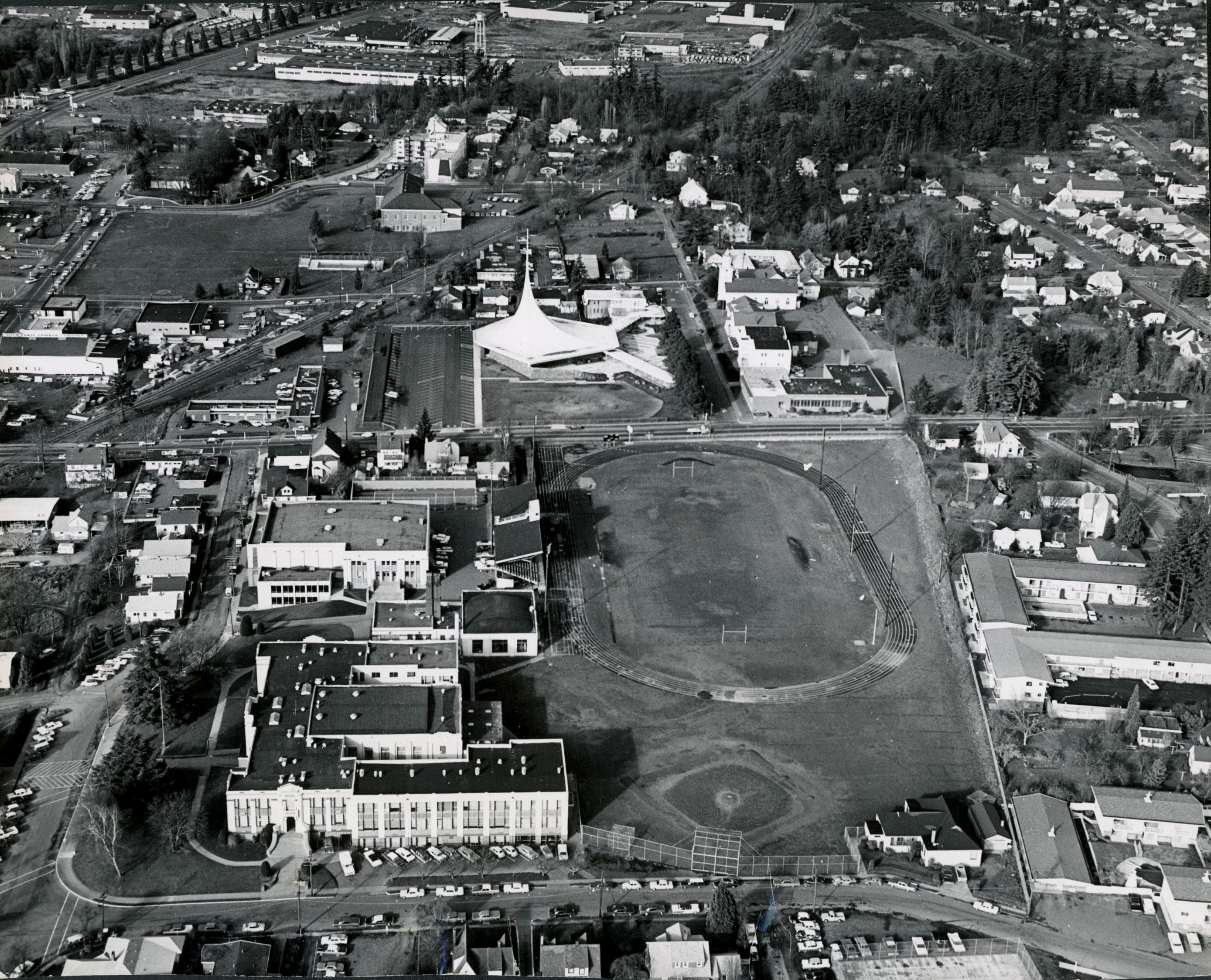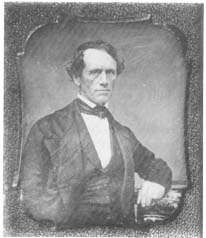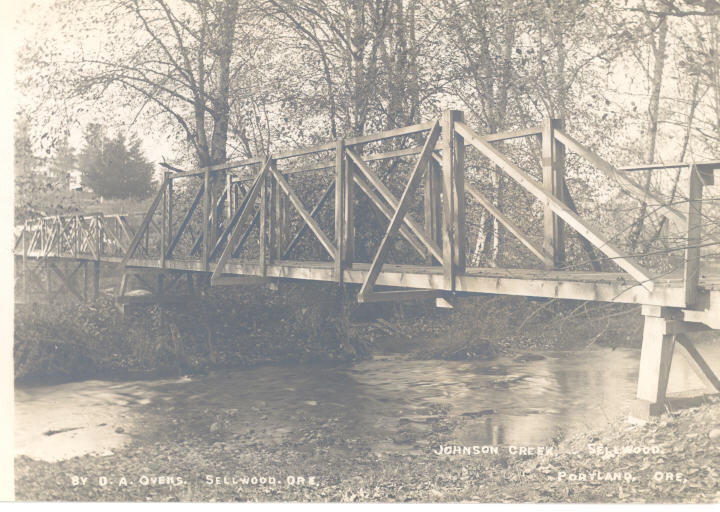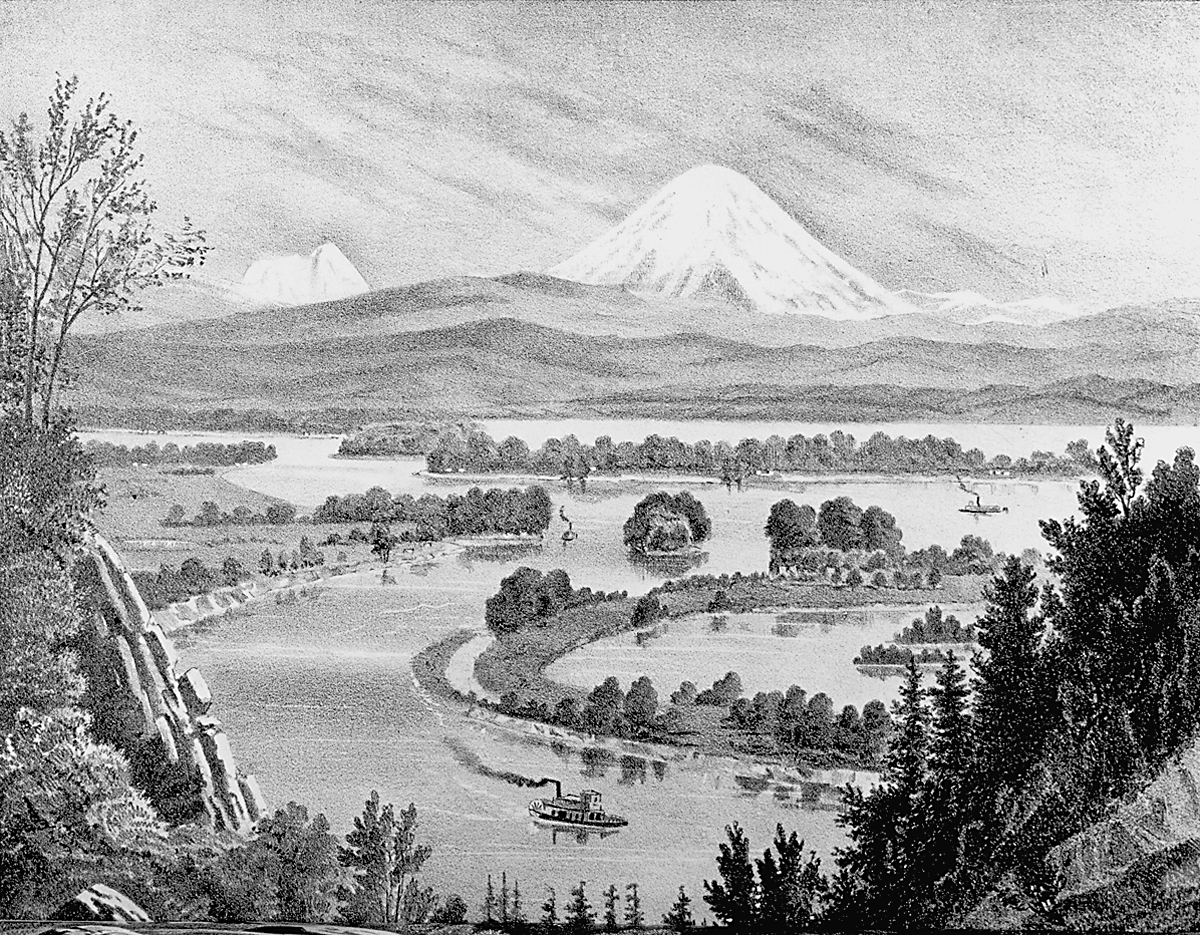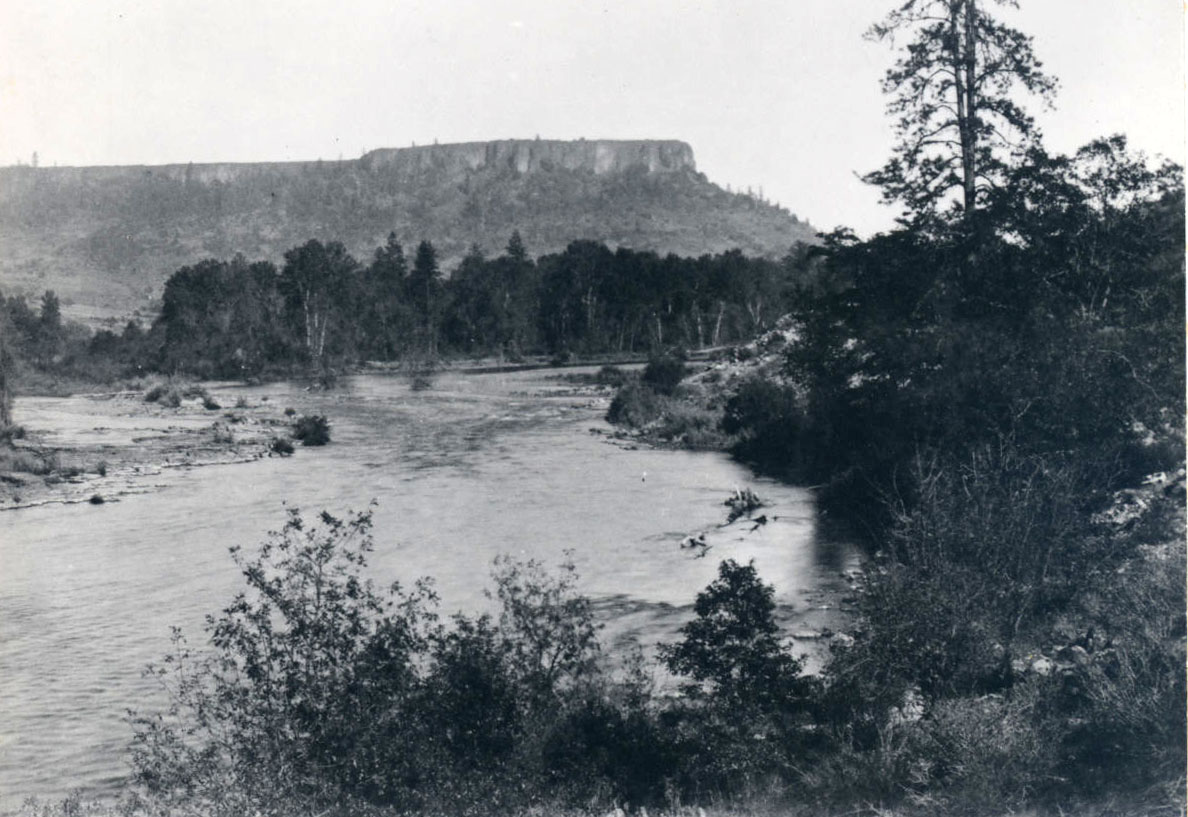Located at the northern edge of Clackamas County and on the east bank of the Willamette River, Milwaukie is at the confluence of Kellogg Creek, Johnson Creek, and the Willamette River. Milwaukie began as an agricultural and shipping settlement in the mid-nineteenth century, but since World War II it has become a manufacturing and industrial center on the outskirts of Portland.
The site of Milwaukie was originally home to several permanent and seasonal settlements of the Clackamas people. A Chinookan Native American group, the Clackamas thrived in the region until the early nineteenth century, when diseases such as smallpox and malaria, caused by exposure to white explorers, fur trappers, and settlers, had taken their toll on the population.
In late 1847, Lot Whitcomb, a businessman who had traveled the Oregon Trail, led a group to establish the first permanent white settlement in what would become Milwaukie. He acquired a land claim (under the Oregon Provisional Government) of nearly six hundred acres at the mouth of Johnson Creek and named it Milwaukie after his hometown in Wisconsin. At the time, Milwaukee, Wisconsin, was frequently spelled with an “ie,” and how a person spelled the town name was frequently associated with his or her political leanings. Democrats favored “Milwaukie,” while Whigs, and subsequently Republicans, favored “Milwaukee.”
Between 1848 and 1851, the town of Milwaukie, Oregon, thrived. Whitcomb set up a sawmill and a gristmill, and because the town site was accessible to ocean-going vessels, he was soon supplying lumber and flour to California, then in the throes of the Gold Rush. By the end of 1850, the population of Milwaukie had grown to nearly five hundred people, and the town seemed on the verge of dominating the lower Willamette River. It was beginning to outpace Oregon City, about eight miles to the south, mainly because direct access by ocean-going ships was blocked by shallow water where the Clackamas River entered the Willamette on the northern edge of Oregon City.
In December 1850, Whitcomb and fellow Milwaukie settlers Joseph Kellogg and William Torrance successfully launched what was possibly the first steamship built in Oregon, the Lot Whitcomb. Milwaukie might have become a center for shipping and shipbuilding, but Portland, then a fledgling town to the north, began to prosper, siphoning away the ocean-going ships. By 1853, Whitcomb had sold his shipping business to Jacob Kamm and John C. Ainsworth, whose Oregon Steam Navigation Company, founded in 1859, would control transportation and shipping in Oregon for decades.
Meanwhile, in 1851, the federal Office of Indian Affairs set up an office on the west bank of the Willamette, across from the Milwaukie town site. Anson Dart, then Superintendent of Indian Affairs in the Oregon Territory, convinced members of the Clackamas tribe to give up their rights to land on the east side of the Willamette River based on a promise to maintain fishing rights (that agreement was never ratified). Following treaties signed in 1855, the remaining members of the Clackamas (by then fewer than a hundred people) were relocated to the newly established Grand Ronde Reservation.
Throughout the remainder of the nineteenth century, Milwaukie residents continued to supply lumber and flour to cities and towns on the West Coast. The city also became the site of the first fruit tree nursery in the western United States. Founded by Seth Lewelling (sometimes spelled Luelling), who settled in the area only months after Lot Whitcomb arrived, the nursery gained notoriety for the invention of the Bing cherry in 1875. For all of this success, however, there was little population growth in Milwaukie for several decades, and unless you were traveling by boat or were willing to take a sometimes impassible road that required fording Johnson Creek, the town remained difficult to reach.
In 1892, the East Side Railway Company connected Oregon City to Portland, by way of Milwaukie, with an electric interurban streetcar. This improvement raised talk of the town becoming a suburb of Portland, but the population remained small. By 1900, even though only about a hundred people lived in Milwaukie, there was growing interest in providing public services to residents. In 1903, the City of Milwaukie was incorporated, and from that point forward the city began to grow. It also began to move away from its agrarian past as new industries sprang up, including P & C Tools, which began making hand-forged tools in about 1920.
While the southern edge of Portland, just north of Milwaukie, had a well-developed grid of surface streets by the early twentieth century, connections on the east side of the Willamette River remained poor, limiting Milwaukie’s potential for growth at a time when automobile use was increasing. That changed in 1930, when plans for a new “Superhighway” were unveiled. Completed in 1937, McLoughlin Boulevard (now Highway 99E) provided a fast connection for drivers traveling between downtown Milwaukie and central Portland, as well as Oregon City and other towns in the Willamette Valley. The road quite literally paved the way for expanded suburban development in Milwaukie after World War II.
By 1969, the first section of the Milwaukie Expressway opened, connecting the city to other Portland-area suburbs as well as highways to the east. In 2015, the Orange Line MAX light rail line began carrying passengers between Milwaukie and Portland.
The small settlement, once centered on the banks of the Willamette River at the mouth of Johnson Creek, has expanded to the east and south and has a population of over twenty-one thousand people (as of 2020). The Milwaukie city limits now border Oak Grove to the south and Clackamas and Happy Valley to the east. It is home to nationally recognized businesses that include Bob’s Red Mill, Blount Industries, Precision Castparts, and Dark Horse Comics.
-
![]()
Standard Flour Mill, Milwaukie, c.1865.
Courtesy Oreg. Hist. Soc. Research Lib., 005732
-
![]()
Milwaukie, Oregon, c. 1870.
Courtesy Oreg. Hist. Soc. Research Lib., 38685
-
![]()
Lot Whitcomb.
Courtesy Oreg. Hist. Soc. Research Lib., Orhi 24679
-
![Captain John Commingers Ainsworth.]()
Ainsworth, Capt. John C., bb004586.
Captain John Commingers Ainsworth. Oreg. Hist. Soc. Research Lib., bb004586
-
![]()
Captain Kellogg, 1903.
Courtesy Oreg. Hist. Soc. Research Lib., photo file602
-
![]()
Margaret Kellogg.
Courtesy Oreg. Hist. Soc. Research Lib., photo file602
-
![]()
Capt. Kellogg's steamboat trade license, 1865.
Courtesy Oreg. Hist. Soc. Research Lib., mss2072
-
![]()
Seth Lewelling, c.1890.
Courtesy Oreg. Hist. Soc. Research Lib., 013058
-
![]()
Seth Luelling residence, Main St., Milwaukie, 1929.
Courtesy Oreg. Hist. Soc. Research Lib., 005110
-
![]()
Milwaukie, Oregon.
Courtesy Oreg. Hist. Soc. Research Lib., 16469
-
![]()
Milwaukie, 1947.
Courtesy Oreg. Hist. Soc. Research Lib., 005759
-
![]()
Milwaukie, 1967.
Courtesy Oreg. Hist. Soc. Research Lib., ba012800
Related Entries
-
![Anson Dart (1797-1879)]()
Anson Dart (1797-1879)
In 1850, Anson Dart (1797-1879), of Wisconsin, was appointed as the fir…
-
![Bing cherry]()
Bing cherry
Bing, perhaps the most famous and highly regarded sweet cherry in the w…
-
![Dark Horse Comics]()
Dark Horse Comics
Born of a maxed-out credit card and a passion for creator rights, Dark …
-
![Johnson Creek]()
Johnson Creek
Johnson Creek is a small stream in the Portland metropolitan area which…
-
![Oregon Steam Navigation Company]()
Oregon Steam Navigation Company
Among early business enterprises in Oregon, the Oregon Steam Navigation…
-
Willamette River
The Willamette River and its extensive drainage basin lie in the greate…
-
![Willamette Valley Treaties]()
Willamette Valley Treaties
From 1848 to 1855, the United States made several treaties with the tri…
Related Historical Records
Map This on the Oregon History WayFinder
The Oregon History Wayfinder is an interactive map that identifies significant places, people, and events in Oregon history.
Further Reading
MacColl, E. Kimbark, with Harry H. Stein. Merchants, Money, & Power: The Portland Establishment, 1843 - 1913. New York: Georgian Press, 1988.
Snyder, Eugene E. Early Portland: Stump-Town Triumphant. Portland, Ore.: Binford & Mort, 1970.
Olson, Charles Oluf. History of Miwaukie, Oregon. Revised. Milwaukie: Milwaukie Historical Society, 1965.

